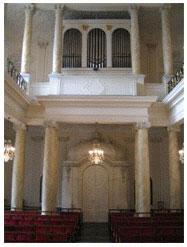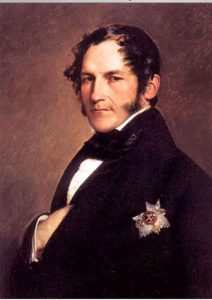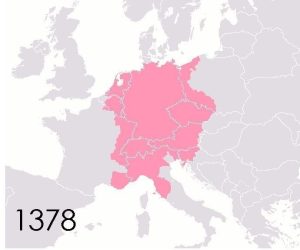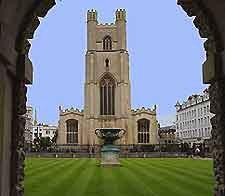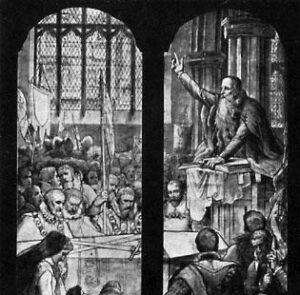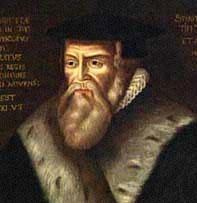Expansion and repression
Belgium and the Low Countries as we know them today were, in the XVIth century, part of the Seventeen Provinces of the Low Countries, together with Luxembourg, the North of France and the West of Germany. The principalities of this “Burgundy circle” (which had been gathered together into one territory in the XVIth century by the dukes of Burgundy) were separated by the Episcopal Principality of Liège.
In 1500 Charles Quint was born in Ghent : he would later become the German Emperor, the king of Spain and the Two Sicilies. In 1515 he inherited the Low Countries. Luther’s ideas spread rapidly but were soon repressed : in 1523 two monks, Henri Voes and Jean van Esschen, who had been strongly influenced by Luther’s ideas, were burnt alive in the Grand’Place in Brussels. From 1529 onwards, Charles Quint issued notices (placards) forbidding these new ideas and as a result thousands of people were imprisoned or put to death. The Reformation movement was quickly taking hold all over Europe, mainly under the influence of Jean Calvin (whose wife, Idelette’ de Bure, came from Liège). The Calvinist reformer Guy de Brès (1522-1567) was a major figure ; he drew up the Confession of Faith of the Spanish Low Countries but was forced to take refuge in London and Geneva ; finally he was hung in Valenciennes.
Repression got worse due to Philip II of Spain’s (1555) absolutist policy and the reign of terror inflicted on the country by the duke of Albe ; in 1568, 19 noblemen were beheaded in the Grand Sablon square in Brussels as well as the count of Egmont and the count of Hornes in the Grand’Place ; more than 10,000 people were sentenced by the much feared “Rebellion Council”. However, in spite of this repression, the Reformation movement continued to spread : in 1566, there were 300,000 protestants, that is to say, 20 per cent of the population.
In the same year, more than 1000 noblemen signed a petition asking for clemency (the “Compromis des Nobles”) in order to bring the persecution to an end ; when it was presented to the Regent, Marguerite de Parme, her counselor said, “Do not fear, Madame, they are only villains”. This is the origin of the nickname of the protestants, who would be rallied in future by the cry “Long live the villains !” In 1574 the act called the “pacification of Ghent” was issued, which gave the protestants a few years of peace. In 1577, a rebellious committee invaded the town hall of Brussels and even went so far as to proclaim a Republic which would enable the protestants to worship in public ; similar events took place in other cities. This did not last long as Alexandre Farnese gradually reconquered the country and the calvinist Republic surrendered in 1585 (although Ostend held out until 1604).
The end of the XVIth century saw the gradual dismantling of the Seventeen United Provinces ; the seven United Provinces of the north remained calvinist (the Union of Utrecht) and became a republic in 1585 ; the southern provinces (Artois, Flanders, Hainaut and the Walloon province) remained catholic and took on the name of the Spanish Low Countries.
Many protestants had to flee the country. A number of “Walloon” French-speaking churches were established in the north of the Low Countries, Germany and England. Many “Belgians” settled in Scandinavia, Prussia or even crossed the Atlantic.
The XVIIth century was known as the century of sorrow. The Archdukes Albert and Isabelle (1598-1633) supported the Jesuits in their project of eliminating the protestants. Pockets of protestant resistance remained, however : in Brussels the embassies of England and the United Provinces were allowed to have a protestant chaplain, in Antwerp the group centred around the painter Jordaens and “Olivier from Brabant”. But on the whole, the despotic Spanish government controlled the country throughout the century. What’s more, Belgium became the battlefield of the main European powers of the time. Louis XUV’s armies took Artois, southern Flanders including Lille and the Cambresis from the Spanish Low Countries.
With the Spanish war of succession (1701-1714) the anglo-batavian troops of general J. Churchill, duke of Marlborough, the protector of the protestants, came onto the scene. Due to the protection of the Dutch troops, protestant temples were opened in several towns (Namur, Tournai, Ypres…) but elsewhere the persecution continued.
In the XVIIIth century, the war of Succession in Spain came to an end with the treaties of Utrecht (1713) and Rastadt (1714) ; the Spanish Low Countries were handed over to the Habsbourgs of Austria. The spirit of the “Enlightenment” spread over Europe and, in 1781, the Emperor of Austria, Joseph II issued the Edict of Tolerance which had already been issued in other parts of his empire. This gave freedom of religious belief to non-catholics but they were only allowed to worship in private. In 1784, protestants were able to register their own official documents. This religious policy and the legal reforms which went with it upset the traditional system of government and led to the “Brabant revolution” which forced the Austrians to leave the country while the “United Belgian States” proclaimed their independence. This was short-lived, however, as the Austrians returned to power in 1790.
Protestantism was recognized
Protestantism in Belgium was only finally recognized under the administrative supervision of Bonaparte ; the jurisdiction of the organic laws of the Concordat extended as far as the annexed “United Departments”, giving them freedom of worship. In 1804, the former chapel of the royal court of Brussels was given to the protestants.
At the congress of Vienna (1815), a decision was taken to unite the Belgian and Dutch provinces into one state, the kingdom of Holland with William of Orange-Nassau as its king, becoming the title of William Ist. During his reign, protestant communities were encouraged to settle and out of a population of 4 million, 15.000 were protestant shortly before 1830, when the former kingdom of Holland split into the two new separate kingdoms of Belgium and Holland. The constitution of 1831 established independence of worship for catholics, protestants, anglicans and israelites with no interference from the State and set in motion a plan of financial aid for acts of worship, chaplaincies and religious instruction.
Although the first Belgian sovereign, Leopold Ist (1790-1865) was a lutheran, the catholic clergy continued to prevent the development of protestantism throughout the century.
Despite this, a number of protestant communities were established during the XIXth century and the anglican missionary societies made remarkable headway, especially the evangelicals, the methodists and the pentecostals, who came from Holland, Germany and America. In 1839, the state of Belgium recognized the Union des Eglises Protestantes Evangéliques. Parallel to the official structures, free Churches were set up : in 1854, the Assemblée des Frères for example and in 1875 the pastor Nicolas de Jonge opened a school for training evangelists which was attended by Vincent Van Gogh.
At the beginning of the XXth century, the Société d’Histoire du Protestantisme Belge was established and the Société Belge des Missions Protestantes au Congo (1908) was highly successful.
During the Second World War many pastors were deported or put to death. From 1962 onwards some members of the protestant minority, including the reformed and methodist Churches, worked towards progressive unification with other Churches. This culminated in the foundation of the reformed Eglise Protestante Unie de Belgique (EPUB) in1979 ; it was recognized by the State, who supervised the stipend of the pastors. This Church plays an active role in the integration of refugees and migrants as well as the sending out of missionaries, notably to Rwanda. Similarly, the different evangelical Churches participate in the Fédération Evangélique Francophone de Belgique.
Over the years an organization was put into place, the Conseil Administratif du Culte Protestant Evangélique (CACPE) which has now been officially representing Belgian Protestantism since 2003.
Out of a present population of 10.500.000 inhabitants, 8.750.000 are catholics and 145.000 are protestants.

